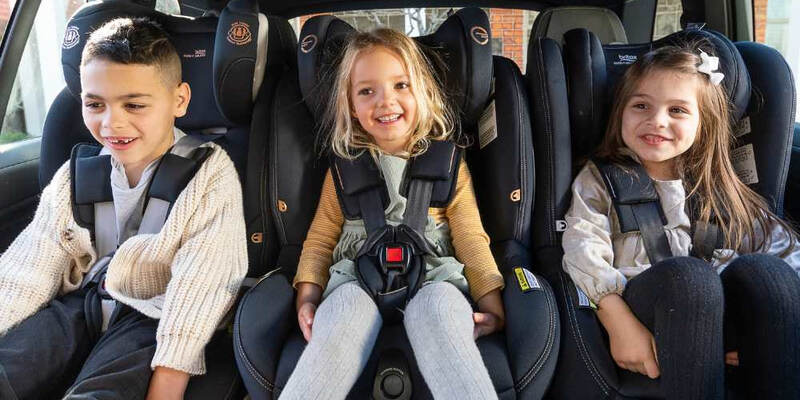Explore the Safety Frist Car Seat 3-in-1 Manual – your essential guide to installation, adjustments, and safe travel for your child.
When securing your child throughout vehicle trips, nothing is more essential than selecting the right car seat. The Safety First Car Seat 3 1 Manual redefines convenience and security, providing a service that progresses with your child’s development. This isn’t simply another safety seat– it’s a thoroughly engineered piece of innovation created to cover all the stages of your child’s early years: from a rear-facing baby seat to a forward-facing young child seat, and lastly, a booster seat for older kids.
What sets the Safety First Car Seat 3 1 Manual apart is its versatility. You no longer need to fret about upgrading to a brand-new seat as your child grows. This one seat adapts to their changing needs, saving you time, money, and the trouble of constantly re-evaluating which seat is best. It’s a real game-changer in kid security, blending innovative style with exceptional functionality.
The Safety First Car Seat 3 1 Manual is more than simply a guide to protect travels; it’s a financial investment in your child’s safety that offers peace of mind each time you hit the roadway. With this vehicle seat, you can rest simply, understanding your kid is safe and secure, comfortable, and all set for the ride ahead.
A Parent’s Best Friend: Convenience and Safety in One
Safety First Car Seat 3 in 1 Manual: Guide to Safe Travels. In the fast-paced world of parenting, the less time invested fretting about complicated automobile seat setups, the better. The Safety First Car Seat 3 in-1 removes the requirement for multiple vehicle seats as your child grows.
The Importance of Choosing the Right Car Seat for Your Child’s Safety
Picking the right car seat is not simply a matter of choice– it’s a matter of life and death. The appropriate vehicle seat can decrease the threat of injury or death during an automobile crash.
Summary of the Safety First Car Seat 3 in 1: What Makes It Unique?
The Safety First Car Seat 3 in-1 is a revolutionary design that changes your child’s development, moving from rear-facing for babies to forward-facing for young children and finally into a booster seat for older kids. This adaptability eliminates the requirement for purchasing numerous vehicle seats, saving money and area while guaranteeing that security stays the top priority throughout your kid’s early years.
Understanding the Safety First Car Seat 3 in 1: A Versatile Solution
What Does 3 in 1 Mean?
The term “3 in 1” refers to the seat’s three primary modes of usage: booster, rear-facing, and forward-facing. Each mode is specifically designed for different age groups, guaranteeing your kid’s advancement is supported while remaining within the bounds of market safety requirements.
How the Safety First Car Seat Evolves as Your Child Grows
The genius behind the 3 in 1 is its ability to evolve as your child grows. As your little one establishes, just transition the seat to forward-facing and eventually to a booster seat that accommodates older kids.
Advantages of Having a Single Car Seat for All Stages
Why buy multiple car seats when one can do the job of three? The Safety First Car Seat 3 1 supplies convenience by providing a long-term, all-encompassing service that adapts as your kid grows. This lowers the clutter in your automobile and decreases the expenditure of replacing seats at different growth milestones.
Step 1: Unboxing and Assembly– Getting Started
What’s Inside the Box? A Checklist of All Components
You’ll find whatever is necessary to start using your brand-new automobile seat upon unboxing. The box typically contains the car seat base, seat back, harness system, cup holder, recline system, and user’s manual. Inspect the contents against the offered list to guarantee you haven’t missed any vital parts.
Quick Guide to Assembling Your Safety First Car Seat
Assembly is uncomplicated, even for novice moms and dads. Start by attaching the base to the seat back, following the clear, colour-coded directions. The harness system comes pre-installed; however, you must change it to fit your child’s size. The manual will guide you through the procedure to guarantee everything is fitted firmly.
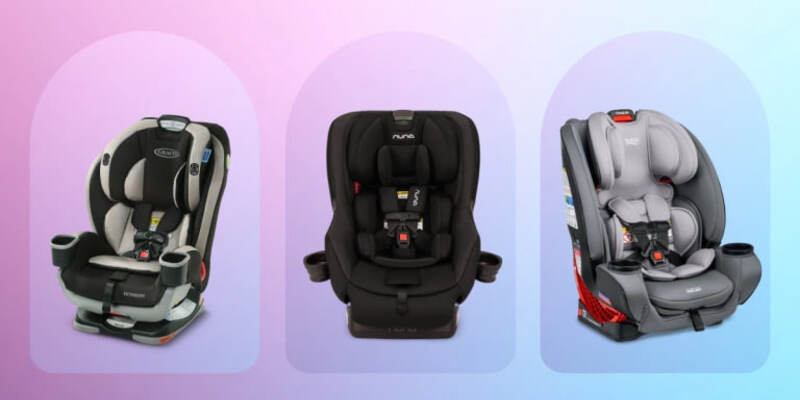
Tips for Making the Setup Process Hassle-Free and Smooth
Set aside a peaceful time to focus on assembly. Prevent interruptions, as proper assembly is essential for security. It may be helpful to lay the parts out in order before you begin. And remember, do not rush– it’s much better to take your time to make sure that each component is correctly secured.
Action 2: Installation: Securing Your Seat for Maximum Safety
Importance of Proper Installation for Safety and Comfort
Right, setup isn’t just a matter of convenience– it’s a life-saving requirement. An appropriately installed safety seat significantly reduces the risk of injury during an accident. Whether you’re using the LATCH system or the automobile seat belt, it’s essential to make sure the seat is safe and, secure and firmly in location.
Step-by-Step Guide to Installing the Safety First Car Seat Using LATCH
To install your Safety First Car Seat utilizing LATCH, start by finding the LATCH anchors in your vehicle, which are usually discovered between the seat cushion and seatback. Attach the connectors from the automobile seat to the anchors, then pull the straps tight to eliminate any slack.
Setting Up Using the Vehicle Seat Belt: What You Need to Know
Do not stress– the seat belt setup technique is just as effective if your lorry doesn’t have LATCH anchors. Thread the seat belt through the designated course on the safety seat, guaranteeing it’s properly threaded and locked. Pull the belt tight and ensure that the seat stays stable.
How to Check for Proper Installation: The Wiggle Test
As soon as set up, carry out the “wiggle test” by grasping the safety seat at the base and trying to move it from side to side. It does not need to move more than one inch in any instructions. Tighten the straps till the seat is safe and secure if it does.
Typical Installation Mistakes to Avoid
Avoid placing the safety seat on a soft or unsteady surface area, like a bench or couch, as this can affect how the seat is protected. Additionally, never utilize a seat belt with the LATCH system simultaneously– only one technique should be used. Double-check the maker’s guidelines to guarantee compliance with your lorry’s specs.
Rear-Facing Mode: The Safest Position for Newborns and Infants
For babies, rear-facing is generally recognized as the best position. This orientation nestles your child’s neck, spine, and head, supplying optimal defence in case of a crash. The Safety First Car Seat’s rear-facing mode is developed to accommodate children from birth as much as a particular weight and height, depending on the specific design.
Forward-Facing Mode: Transitioning for Toddlers
As your kid outgrows the rear-facing position, the safety seat can quickly be transformed into a forward-facing mode. This transition must be made when your kid meets the weight and height guidelines for this phase. The harness system offers security, guaranteeing your young child stays securely seated.
Booster Seat Mode: Preparing for Older Children
The last, booster seat mode, is for kids who are prepared to utilize the car’s seat belt. The safety seat elevates your kid to the appropriate height, enabling the seat belt to fit securely throughout the chest and hips, ensuring optimum defence.
How to Adjust the Car Seat from One Mode to Another
Changing between modes is a simple procedure. Follow the instructions in the manual, which generally include rearranging the harness, adjusting the recline, or connecting the car seat back. With a few fast modifications, you can ensure your child’s seat is correctly configured for their present stage.
Step 4: Harnessing Your Child Safely: The Right Fit Every Time
The Importance of a Proper Harness Fit for Safety
The harness is the primary safety function of any safety seat, ensuring your kid remains firmly in place during travel. A well-adjusted harness minimizes the likelihood of injury by preventing excessive motion during sudden stops or crashes.
How to Adjust the 5-Point Harness in Each Mode
In rear-facing mode, the harness needs to be placed at or listed below your baby’s shoulders. In forward-facing mode, change the harness to sit at or simply above your child’s shoulders. For the booster seat mode, the lorry’s seat belt changes the harness, but it fits comfortably throughout the kid’s chest and lap.
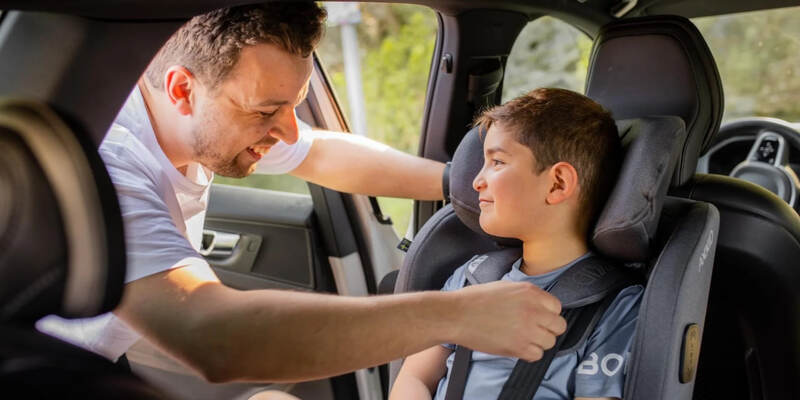
Warning: When the Harness Doesn’t Fit Properly
An incorrectly located or loose harness can be a significant security danger. If the straps are too loose or the chest clip is too low, your kid may not be correctly safeguarded. Always inspect the harness fit before every journey.
How Tight Should the Harness Be? A Visual Guide
To examine the harness fit, place your finger between the straps and your child’s chest. The harness should be snug enough that you can’t pinch any excess material but not so tight that it restricts breathing or comfort.
Step 5: Adjusting the Seat for Maximum Comfort
Recline Options and How They Benefit Your Child’s Comfort
The Safety First Car Seat uses several recline positions to guarantee your kid’s comfort, particularly throughout long journeys. For infants, the appropriate recline angle is essential for minimizing the danger of their head tumbling forward.
The Very Best Seat Angle for Rear-Facing Babies
A correct recline angle for rear-facing infants guarantees their respiratory tracts stay clear and their heads in a natural, safe position. Most automobile seats, consisting of the Safety First 3 in 1, comprised indicators to assist you in setting the right angle.
How to Ensure Your Child’s Posture is Supported in All Modes
In all modes, ensure your child’s back and neck are supported in a natural position. The Safety First Car Seat permits adjustments that promote great posture and comfort throughout the journey.
Action 6: Tips for Keeping Your Car Seat Fresh and Clean
How to Clean the Fabric and Upholstery Without Damaging It
Cleaning up the vehicle seat material is important; however, it’s essential to do so carefully. Use a soft fabric and a mild cleaning agent or sponge to clean down the fabric. Prevent extreme chemicals, as they may break down the fabric with time.
Washing the Harness: A Safe and Simple Guide
The harness needs to be spot-cleaned with a damp fabric, but if you must remove it for washing, constantly describe the maker’s guidelines. Wash the harness in cold water, air dry it, and never put it in the clothes dryer.
Handling Stains and Spills: What to Do and What Not to Do
Deal with the issue quickly if your car seat is stained. Blot spills immediately with a tidy cloth, and prevent rubbing, as this can spread the stain. For stubborn stains, utilize a child-safe upholstery cleaner.
How Often Should You Clean Your Car Seat?
Routine cleansing is recommended every few weeks, but constantly look for spills or accidents instantly after they occur.
Action 7: Common Mistakes to Avoid with Your Safety First Car Seat
Ignoring Harness Adjustments
As your child grows, their harness needs to be adjusted. Never overlook this critical action. Incorrect harness positioning can significantly decrease the seat’s efficiency in protecting your kid.
Installing the Seat Incorrectly: How to Avoid Common Errors
Inappropriate setup is one of the most typical mistakes parents make. Constantly follow the maker’s guide closely, whether using the LATCH system or a seat belt. Never presume that “close enough” is significant enough– double-check whatever.

Utilizing the Car Seat Past Its Expiration Date
Vehicle seats have an expiration date, usually 6-10 years after manufacture. Because the products degrade over time, this is. Constantly inspect your seat’s expiration date to ensure it’s still safe.
When Not to Switch to the Next Mode
Switching to the next mode too early can compromise your kid’s security. Constantly wait till your kid satisfies the specific weight and height guidelines before transitioning.
Step 8: How to Ensure Your Child’s Safety During Road Trips
Extra Precautions for Long Car Rides
For long journeys, ensure the car and truck seats are firmly secured and your kid is comfortable. Take regular breaks to inspect the fit of the harness and allow your child to stretch their legs.
What to Pack for the Journey (and How to Store It).
Pack basics such as snacks, water, additional clothes, and a small blanket for your child. Keep these items in a practical bag that can be easily accessed during a trip.
Keeping Your Child Entertained and Comfortable in the Car Seat.
Invest in travel-friendly toys or books that can keep your kid amused. Likewise, ensure your child’s environment is comfortable– use a sunshade to keep them cool and prevent glare.
Managing Temperature and Airflow During the Trip.
Safety seats can become uncomfortably hot or cold, especially during long drives. Ensure your car is well-ventilated, and dress your child in comfy layers that can be changed as needed.
Step 9: Checking for Recalls and Ensuring Your Car Seat is Up-to-Date.
How to Check if Your Car Seat Has Been Recalled.
Routinely examine for safety seat recalls utilizing the producer’s website or the National Highway Traffic Safety Administration (NHTSA) website. Keep your car and truck seat registration details convenient for quicker updates.
Why Keeping Track of Your Car Seat’s Expiration Date Matters.
An expired safety seat may not supply the necessary defence in an accident. Constantly monitor your seat’s expiration date and replace it if required.
How to Register Your Safety First Car Seat for Recalls and Updates.
Register your cars and truck seats with the manufacturer after purchase. This will ensure immediate updates on recalls, item enhancements, and safety notifications.
Step 10: Transitioning Between Modes: When and How to Make the Switch.
Indications Your Child Is Ready for a New Mode.
Take notice of your kid’s development. If they surpass the height or weight limitation for a specific mode, it’s time to transition to the next one. The guidelines offered by the manufacturer will assist you in making the ideal decision.
Safety Guidelines for Moving from Rear-Facing to Forward-Facing.
The rear-facing to forward-facing transition must only occur when your child surpasses the rear-facing weight or height limits. Always follow state and federal standards for the finest security practices.
Understanding Booster Seat Laws in Your State or Region.
Each state has particular laws concerning when to shift to a car seat. Be sure to familiarize yourself with local policies to keep your child safe and adhere to the law.
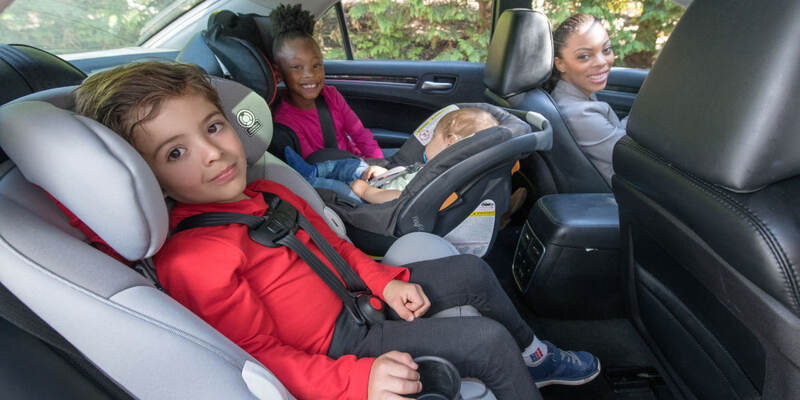
Ensuring the Fit is Correct After Switching Modes.
After transitioning between modes, verify that your kid is effectively suited to the seat. The harness needs to be snug and positioned correctly in all phases.
Step 11: How to Safely Travel with a Car Seat on Airplanes.
Airline-Approved Car Seats: What You Need to Know.
When taking a trip by air, ensure your safety seat is approved for plane usage. Find labels suggesting the seat fulfils FAA (Federal Aviation Administration) standards.
Tips for Installing Your Safety First Car Seat on a Plane.
Installing a safety seat on a plane is comparable to setup in an automobile. Protect the seat with the aeroplane seatbelt, ensuring it is securely fitted. Ask the flight attendants for any additional help if needed.
Should You Bring Your Car Seat or Rent One?
Bringing your safety seat is frequently the safest and most comfy alternative, but if you intend to rent, ensure the rental agency provides a seat that meets your standards.
How to Ensure Comfort for Your Child During the Flight.
Pack travel-friendly snacks, convenience products like a preferred blanket, and toys to amuse your child. Ensure your child remains hydrated and as comfortable as possible during the flight.
Action 12: Car Seat Safety Beyond Installation.
How to Avoid Common Car Seat Misuse.
The most considerable risk comes from misuse. Never misuse a vehicle seat or for functions aside from its desired use. Ensure it is constantly set up effectively and that your kid is harnessed correctly.
The Role of the Car’s Airbags and How They Affect Your Child’s Seat.
Never position a rear-facing safety seat in the front traveller seat of a car with an active airbag. Always follow lorry directions for kid safety, and if in doubt, keep your kid in the back seat.
The Importance of Using the Car Seat Correctly Every Time You Travel.
Each journey requires the same attention to detail, no matter how short. Even on a fast errand, ensure the safety seat is correctly set up and your child is safely utilized.
What to Do in an Accident: How to Handle a Car Seat After a Crash.
Change the automobile seat even if there are no noticeable damages if your vehicle is involved in an accident. Safety seats can be jeopardized in ways that aren’t right away obvious.
Step 13: The Safety First Car Seat 3 in 1 vs Other Models: Why It Stands Out.
Comparing Features: Safety, Comfort, and Convenience.
The Safety First Car Seat 3 in-1 uses an ideal balance of safety functions, convenience, and benefits, setting it apart from other designs. Its simple transitions, several recline positions, and resilient build make it a leading contender in the vehicle seat market.
Cost-Effectiveness: Long-Term Savings with a 3 1 Seat.
While some might baulk at the preliminary financial investment, the 3 1 automobile seat is created to last through your kid’s entire safety seat years. This long-term solution conserves your cash and eliminates the need for several purchases.
Customer Reviews: Why Parents Love the Safety First Car Seat.
Moms and dads rave about the ease of convenience, security, and setup features of this design. Many report how much assurance it brings to understand their kid remains in a seat that adjusts to their needs over time.
Action 14: Parent Testimonials: Real-Life Experiences with the Safety First Car Seat.
What Parents Say About Using the 3 1 Seat Through the Years.
Parents share stories of how the Safety First Car Seat 3 in 1 has been an essential part of their children’s journeys. From newborns to young children, the vehicle seat adjusts quickly, and parents appreciate its simplicity.
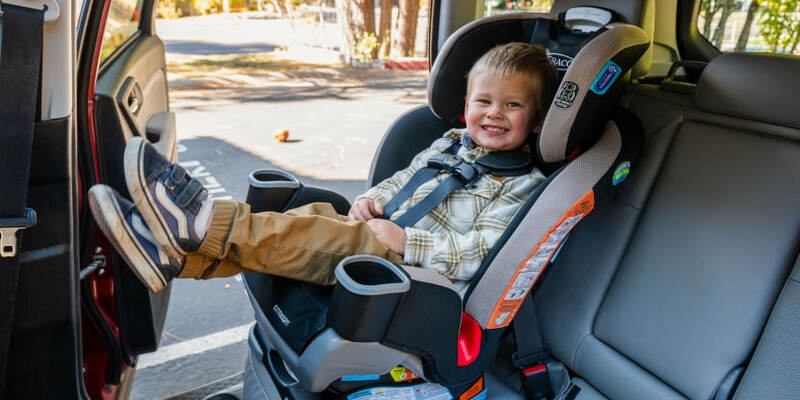
Success Stories: How the Car Seat Adapts to Growing Children.
As children grow, so do their needs. Moms and dads highlight the adaptability of the seat, as it efficiently shifts from rear-facing to forward-facing and lastly to car seat, constantly keeping their child safe.
Obstacles and How to Overcome Them with the Safety First Car Seat.
Some moms and dads point out the challenges of ensuring the seat’s setup is ideal every time, but the straightforward style and clear guidelines help alleviate any confusion.
Conclusion: Ensuring Safe Travels for Your Little One, Every Time.
Buying the Safety First Car Seat 3 in 1 ensures that your kid’s security is never compromised, no matter their development phase. Its versatility, ease of usage, and long-lasting value make it the ultimate choice for parents wanting to simplify their vehicle seat requirements. By choosing this design, you guarantee that your kid takes a trip safely, easily, and securely from infancy to youth. The road ahead might be unforeseeable.
The Safety First Car Seat 3 in-1 eliminates the need for several automobile seats as your kid grows. The box typically includes the automobile seat base, seat back, harness system, cup holder, recline system, and guideline manual. To install your Safety First Car Seat utilizing LATCH, start by finding the LATCH anchors in your car, which are typically discovered between the seat cushion and seatback. Thread the seat belt through the designated course on the car seat, guaranteeing it’s appropriately threaded and locked. Avoid putting the vehicle seat on an unsteady or soft surface area, like a bench or sofa, as this can affect how the seat is secured.
